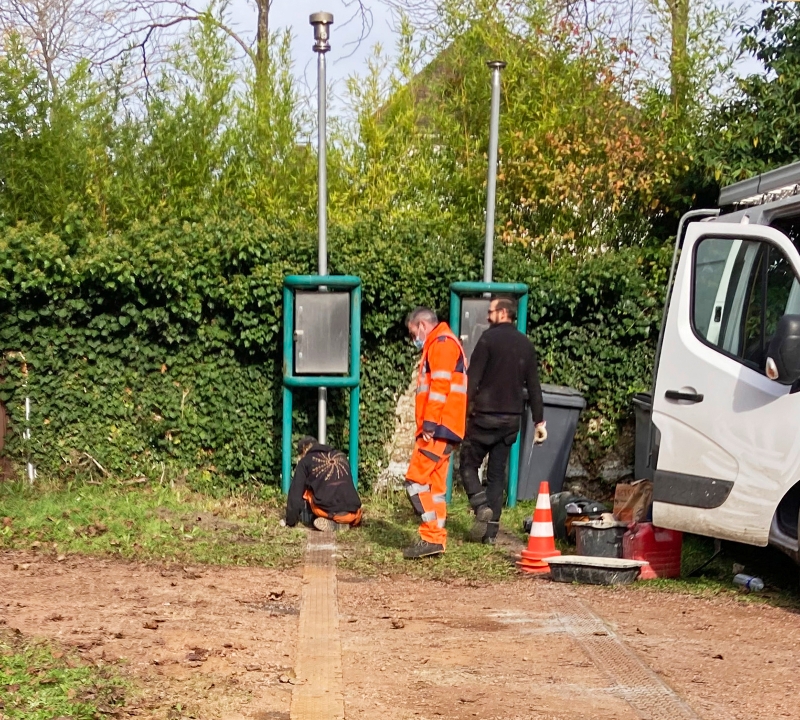Filling in the channel for the pipe linking the remote manhole to the vent hole of the Mon Désir North shaft. © BRGM
Risks and spatial planning
Outstanding result / Nord-Pas-de-Calais: emergency monitoring and work on two former
The Nord-Pas-de-Calais coal basin, which was the largest in Europe, was mined between 1734 and 1990. It covers an area of 100 km x 30 km and goes down to a depth of one kilometre. The sheer size of the site is impressive, with 100,000 km of galleries, 622 shafts and residual voids representing 1.7 km3. More than 2.4 billion tonnes of coal were extracted from the mine over its life time.
However, coal naturally contains mine gas (methane). This gas fills the residual voids where its pressure gradually builds up due to a number of factors, such as barometric pumping, stack effect or progressive flooding, which causes it to migrate to the surface. Five mine-gas reservoirs have been identified in the basin and these are monitored through 540 facilities.
This phenomenon, which can have an impact on people and property, has already been observed at several points in the basin. To remedy the problem, passive venting devices need to be installed. Considering the gradual increase in pressure and the gas's methane content, as well as the potential danger, this safety system sometimes needs to be reinforced.
Such steps have already been taken on two sites in the basin: at the Mon Désir North and South shafts on the Vieux-Condé concession, which were equipped with a remote manhole connected to a degassing vent in 2005. An in-depth assessment of their monitoring process was carried out by the DPSM (Mine Safety and Prevention Department) in June 2021.
In 2023, the DPSM carried out emergency work to modify these vents. These are standard operations, which have been tried and tested in other basins; however, such steps are increasingly required in the Nord-Pas-de-Calais basin.
This work demonstrates the changing nature of the mine deposits and the need to monitor the reaction of the reservoirs to various natural phenomena (temperature, pressure, gradual flooding, etc.). This work is also representative of our core business..







